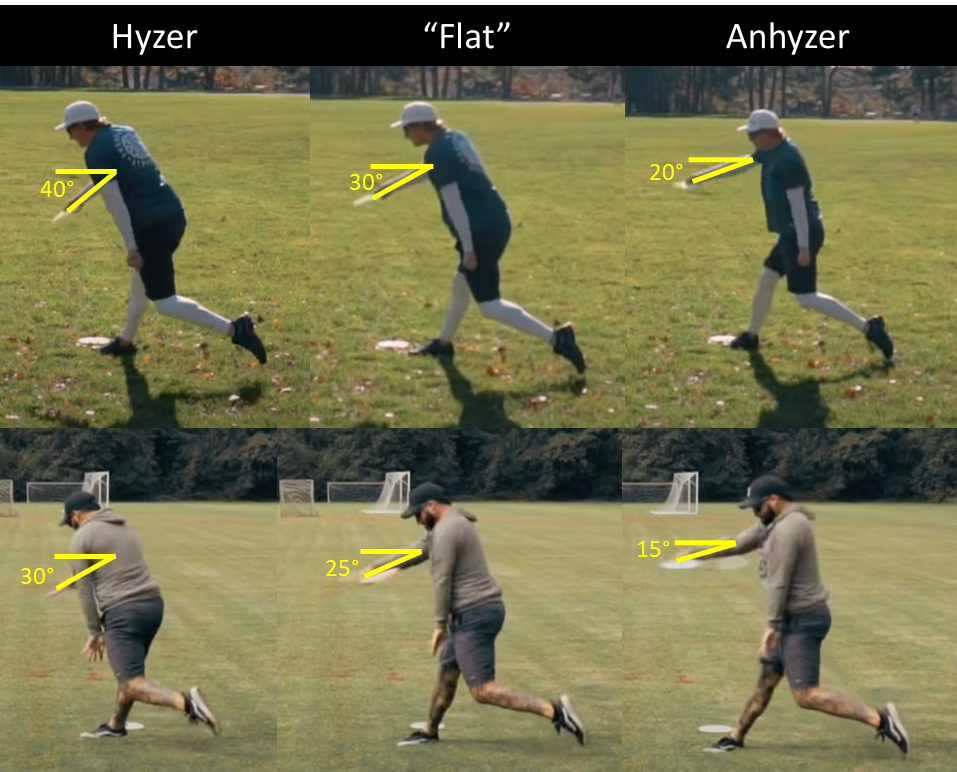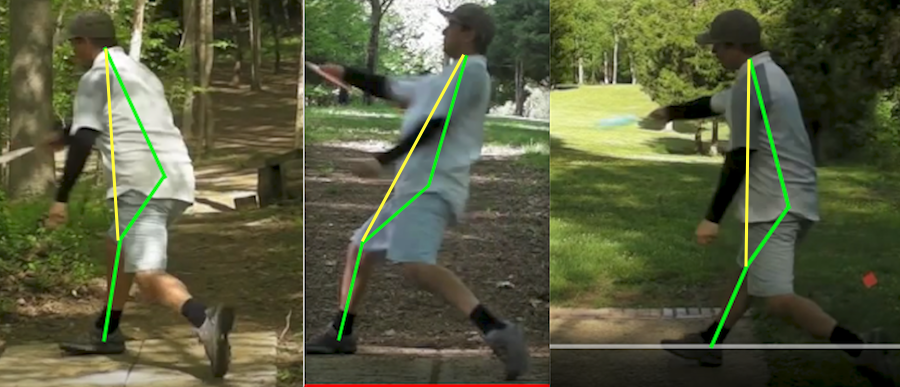Ok, to avoid talking past each other I have three questions.
I'll take a stab at all 3 here - I agree that they're related.
1) What you call the "dip" I always thought was just evidence of side bend (as described in that one golf video everyone links), is this correct? IMO I don't have to do anything to create side bend, the side bend you kind of get for free through the way the hips work (the lean is automatic).
I'm kind of with you depending on what you mean, and definitely don't overcomplicate it if you can help it.
Though the minor caveat is that side bend is more about the transition through the core/rotation through thoracic part of the back and can be isolated from the hips to an extent. I think that's why many people have trouble getting into "fully loaded" positions in dynamic balance, and can often benefit from the whole body drills like KJUSA example or the golf side bend drill (or door frame drill, or Inside swing, and so on). Of course, in the KJUSA and golf instructor examples, they are still allowing their spine to swing and legs/hips to move!
I've also found that is possible to load up a side behind that results in much poorer engagement of the throwing lat muscle - and no matter your body type I think you definitely want that big muscle loading in the backswing and unloading in the swing on top of the rest of the core action.
So I agree that trying to completely isolate it from the hips can backfire and it was something that screwed me up for a while. Some people have less trouble with it than others, I think. For instance, I can now control my shoulder lean much more precisely than a year ago and noticed that it makes big differences in how my legs and hips move together (or not) at this point, how I get loaded and balanced against the rear leg and through the core, etc.
E.g., I can also shovel snow using my legs & hips, but also leave power from my core and lat on the table if my shoulder lean/side bend is a little off, which interacts with my balance, etc. I think this is why I've gained the most from big heavy swings that get my whole body moving since it's harder to cheat and the inefficiencies are more obvious to my body.
2) If I attempt a more pronounced shoulder dip/side bend, I feel like the only angle I can throw on is hyzer since I'm literally leaned over. How do you throw with MORE side bend and get to "flat"/anhyzer? In the gif that SW22 links, KJ is 100% set up to throw a spike hyzer. He cannot, as a counterexample, throw a roller from that position (without using some absurd disc)
I
totally understand where this question is coming from.
IMHO there's not a
perfect way to talk about this, but I'll try.
TL;DR: you learn that posture is a single "unit" the body moves in, then adjust that whole "unit" for the shot.
KJ does like hyzers. IIRC he's one of the guys who doesn't like to throw many "flattish" or anhyzer shots at all if he can help it.
But reminder that the "macro" posture for a lot of pros tends to still posturally swing the arm on some degree of hyzer for distance shots, even for long "anhyzers". I think details of the wrist and swing axis also control some of the ejection angle. Though it is interesting that their overall move still is skewed in the "hyzer" plant in terms of how the arm swings through. I'm still open-minded in this area btw, but I do think this is one reason SW emphasizes working in the hyzer angle when making mechanical changes. It's easier to find axes and efficiencies that exploit gravity. Obviously there's variability beyond Simon and Gibson out there and even from shot to shot, just wanted to mention. I never saw the swing the same way again after I started paying more attention to how the arm angle tends to swing on max distance lines, then started "backtracking" it through the body's posture in pro movement.

One anecdote: lately I am throwing my big sledge on hyzer trying to work out the sweet spots. I noticed that if I want to, I can start to adjust my whole posture to sling the hammer flatter up to a point without additional effort. It's possible to go true anhyzer but the efficiency drops rapidly as I move against gravity and it's easier to get out of balance when adding momentum. Not a conclusion, just an observation. I suspect this is another reason why SW emphasizes building around the hyzer plane in general and then adjusting posture as a unit to achieve the shot goal.
3) Perhaps the question i've been trying to ask all along: When you throw a disc, at some point the elbow needs to come up to roughly nipple height to create your power pocket (see seabas video describing power pocket as untwisting jar). I understand that you can throw from various arm heights but bear with me. As you follow through, the follow throw is up and out "high fiving". Is it possible to raise your elbow/create the power pocket without the lead shoulder rising? OR Is the "level" shoulders at release/power pocket kind of an optical illusion, whereby sufficient side bend counteracts the rising lead shoulder?
This is interesting. If I follow your meaning, I think the trick is that the lead shoulder
is rising relative to the ground, but relative to the body it needs to be following the rest of the torso more relatively "forward" in the swing as you unload through the coiled up core (I'm not sure if that's the best way to see it depending on what frame of reference we're talking about). Since the whole body is ideally coming in on that tilted axis, that's part of what is explaining the "good" rising shoulder, relative to a "bad" rising shoulder that indicated jamming on the front leg or posture collapse in transition off the drive leg.
Let me know how I'm doing






